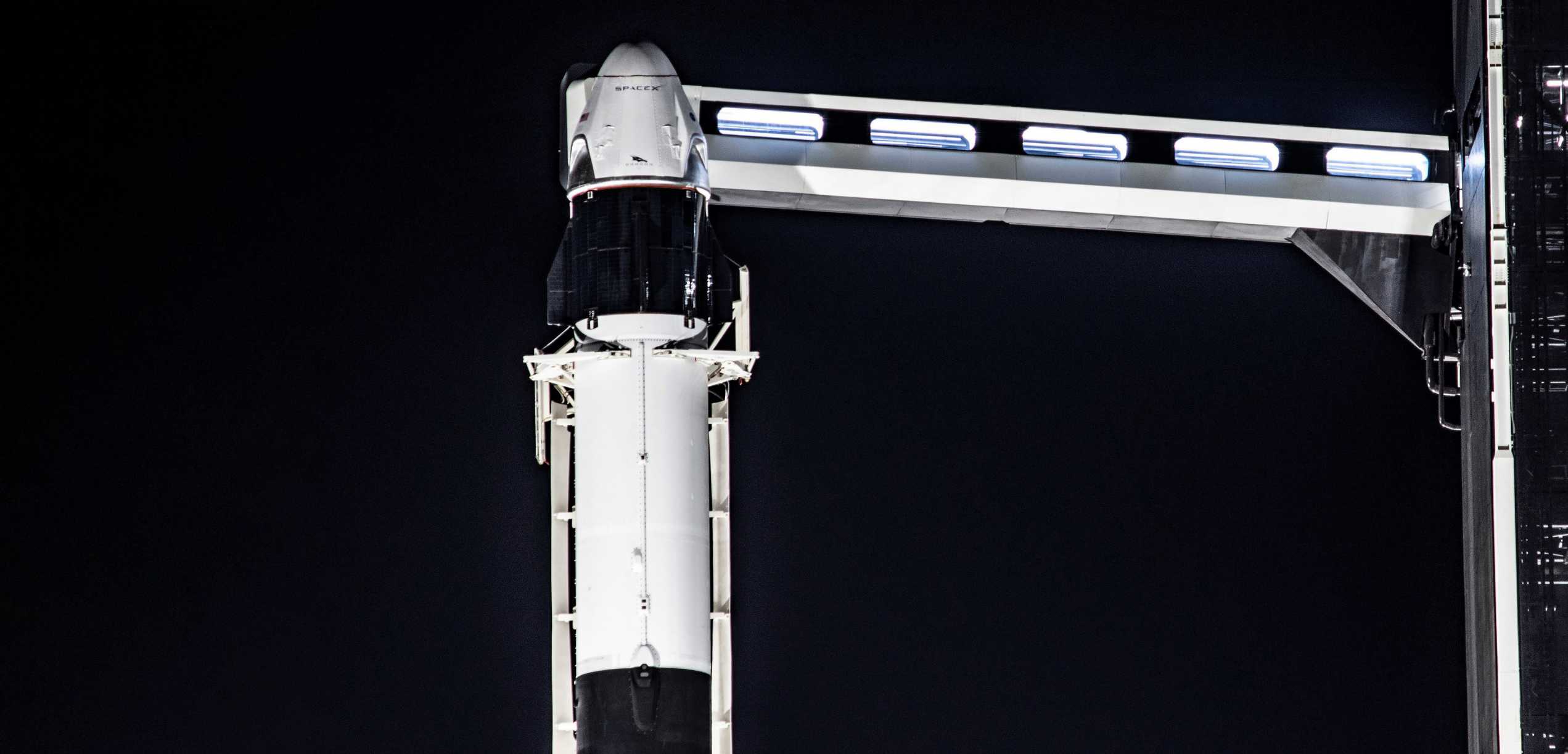
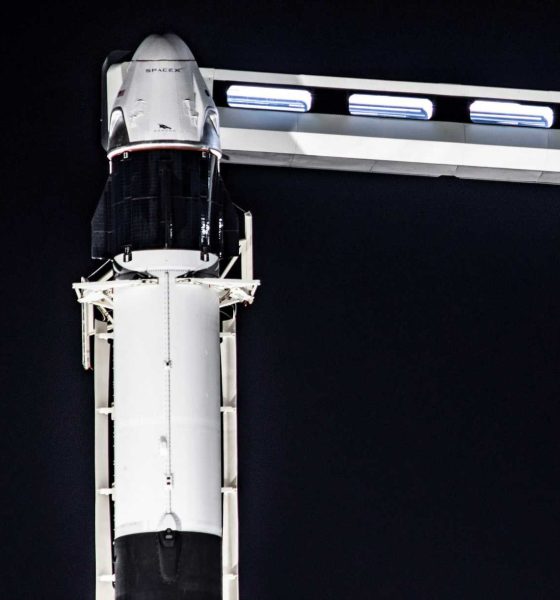
News
NASA says SpaceX's Crew Dragon abort test is go for launch on doomed Falcon 9 rocket
NASA has formally given SpaceX permission for Crew Dragon’s second launch – a crucial test flight that should be the last before SpaceX launches NASA astronauts to the International Space Station (ISS) for the first time ever.
Known as its In-Flight Abort (IFA) test, Crew Dragon will attempt to escape a Falcon 9 rocket while airborne, a feat that CEO Elon Musk says will almost certainly destroy the rocket in the process. Technically speaking, NASA and SpaceX completed what is known as a Launch Readiness Review (LRR) sometime on Thursday, allowing SpaceX to proceed with launch preparations. By all accounts, Crew Dragon’s IFA test will likely be one of the most spectacular SpaceX launches ever, given that it is all but guaranteed to result in the intentional in-flight failure of a massive Falcon 9 rocket – “destroyed in Dragon fire” according to Musk.
Thanks to a much smoother launch flow compared to Crew Dragon’s Demo-1 orbital launch debut on Falcon 9, SpaceX’s newest Crew Dragon capsule is scheduled to lift off from Kennedy Space Center Launch Complex 39A (KSC LC-39A) as early as 8 am EST (13:00 UTC), Saturday, January 18th. The In-Flight Abort test will likely be one of Crew Dragon’s most challenging hurdles yet but success would be a major boon for the spacecraft’s demonstrated safety. While both Boeing and SpaceX will ultimately ferry NASA astronauts to and from the ISS, only SpaceX chose to prove Crew Dragon’s in-flight abort capabilities in the real world.
Effectively condemned to destruction to support a greater cause after a productive life, Falcon 9 Block 5 booster B1046 rolled out to Pad 39A – Crew Dragon mounted atop it – on January 16th after successfully performing its last routine static fire on the 11th. As previously discussed on Teslarati, B1046 is the first Falcon 9 Block 5 booster completed by SpaceX and is thus also the oldest flightworthy rocket in the company’s substantial fleet.
“After becoming the first SpaceX booster to launch three times in December 2018, B1046 spent several months at SpaceX’s Hawthorne, CA factory undergoing inspections and refurbishment. At some point, SpaceX assigned the thrice-flown booster to support Crew Dragon’s In-Flight Abort (IFA) test – effectively a death sentence – and shipped the booster to Florida, where it publicly appeared for the first time in months on October 3rd, 2019. Given that four more Falcon 9 boosters have now successfully performed three (or even four) orbital-class launches each, B1046’s now-imminent demise is certainly disappointing but remains extremely pragmatic.”
Teslarati.com — January 15th, 2020
As such, there is arguably no better booster for SpaceX to expend even if its loss is still less satisfying than a successful post-launch landing. In fact, aside from NASA’s prematurely-retired Space Shuttle, the entire history of orbital-class rocketry has effectively operated on the assumption that it’s both normal and necessary for rockets to be almost entirely expendable.
Only by sheer force of will has SpaceX turned that assumption on its head, making the act of expending Falcon 9 or Falcon Heavy boosters feel suddenly morose. Even then, the practice of propulsively landing orbital-class boosters is scarcely four years old, while reusing those boosters has been ongoing for less than three years. As such, B1046’s demise should be enjoyed for what it ultimately is: the spectacular retirement of a rocket that has already helped launch three separate payloads to orbit.
Perhaps even more importantly, B1046’s sacrifice should – if things go as planned – also pave the way for Crew Dragon to launch its first NASA astronauts into orbit just a few months from now. For the test to be successful, however, Crew Dragon will have to perform an extremely precise string of maneuvers – the failure of any one of which could potentially lead to the spacecraft’s destruction.
“Traveling as fast as Mach 2.5 (860 m/s) at an altitude of 28 kilometers (17 mi), Crew Dragon will ignite its abort thrusters and attempt to escape, the very act of which will likely hammer the spacecraft’s windward surfaces with an extra dozen or so metric tons (~25,000 lb) of aerodynamic pressure. Crew Dragon C205 could thus find itself traveling almost Mach 3 (more than a kilometer per second) moments after separating from Falcon 9, eventually reaching an apogee of almost 75 km (45 mi), after which it will reenter the bulk of Earth’s atmosphere and have to deploy an array of parachutes to ensure a gentle Atlantic Ocean splashdown.”
Teslarati.com — January 13th, 2020
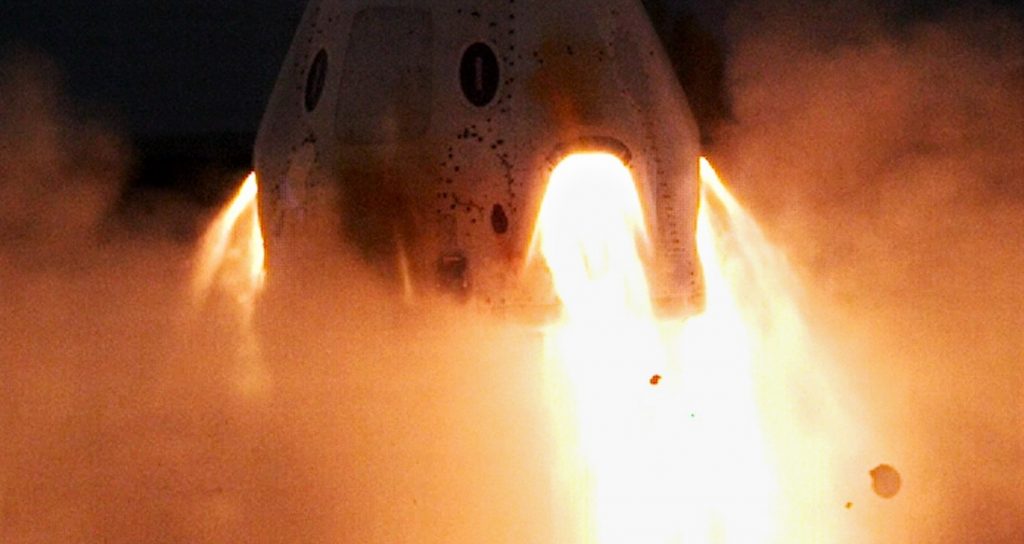
Unfortunately, Crew Dragon escaping a supersonic Falcon 9 also means that that same Falcon 9 – basically a thin, flexible tube designed to be as light as possible – will meet a supersonic blast of air the moment Dragon’s SuperDraco abort thrusters ignite. A bit like if a hurricane on all kinds of meteorological steroids just sort of punched a soda can for fun, that airstream will almost certainly obliterate Falcon 9’s sacrificial upper stage into a sort of aluminum snow, quickly revealing – and likely then destroying – B1046’s carbon fiber interstage.
The rest of the thrice-flown Falcon 9 booster is also liable to break up after that supersonic punch. In fact, SpaceX engineers are so confident in B1046’s imminent demise that the booster will have neither landing legs or grid fins come launch. In a best-case scenario, if, against all odds, B1046 survives Dragon’s escape, the intact booster will subsequently impact the Atlantic Ocean at terminal velocity and become a nice, artificial reef off the coast of Florida. Stay tuned for updates from Teslarati and photographers Jamie Groh and Richard Angle as Falcon 9 B1046’s demise inches ever closer.
Check out Teslarati’s Marketplace! We offer Tesla accessories, including for the Tesla Cybertruck and Tesla Model 3.

News
Tesla says Europe could finally get FSD in 2026, and Dutch regulator RDW is key
As per Tesla, a Dutch regulatory exemption targeted for February 2026 could very well be the key gateway for a Europe-wide rollout of FSD.
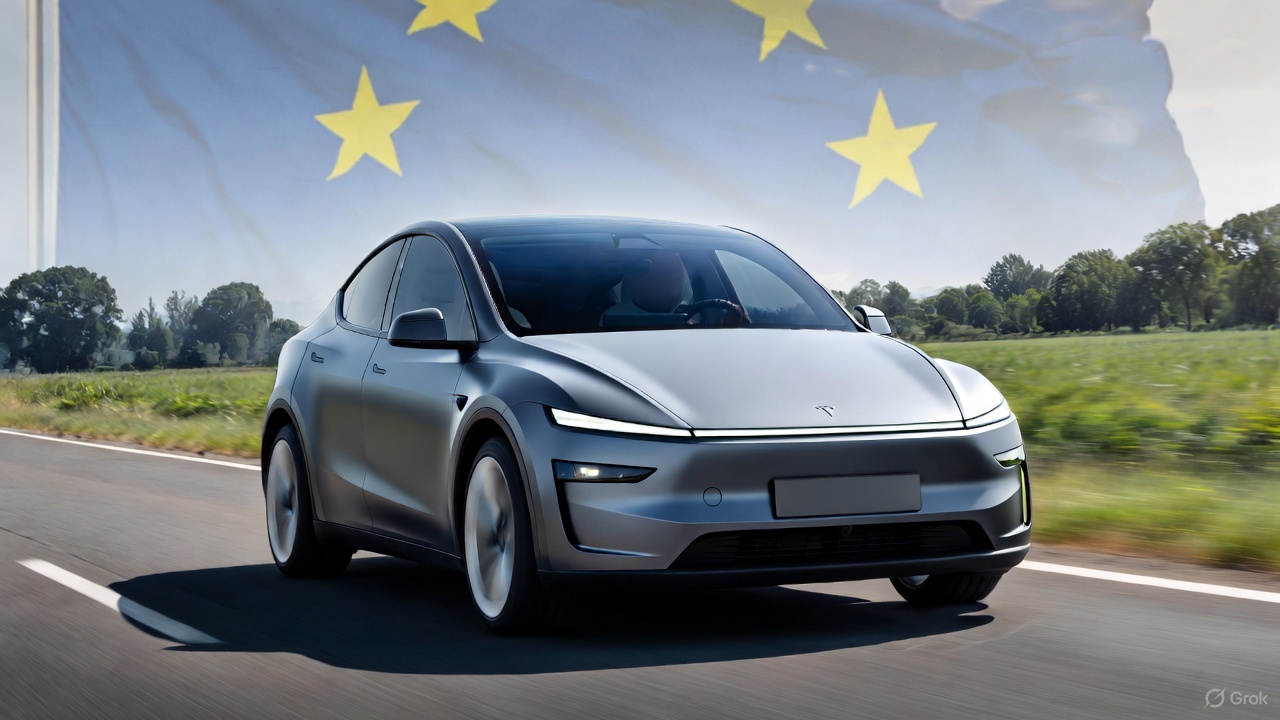
Tesla has shared its most detailed timeline yet for bringing Full Self-Driving (Supervised) to Europe. The electric vehicle maker posted its update through the official X account of Tesla Europe & Middle East.
As per Tesla, a Dutch regulatory exemption targeted for February 2026 could very well be the key gateway for a Europe-wide rollout of FSD.
Tesla pushes for EU approval
Tesla stated that it has spent more than 12 months working directly with European authorities and delivering FSD demonstrations to regulators in several EU member state. Tesla highlighted a number of its efforts for FSD’s release in Europe, such as safety documentation for FSD, which is now included in its latest public Safety Report, and over 1 million kilometers of internal testing conducted on EU roads across 17 countries.
To unlock approval, Tesla is relying on the Netherlands’ approval authority RDW. The process requires proving compliance with UN-R-171 for driver-assist systems while also filing Article 39 exemptions for behaviors that remain unregulated in Europe, such as hands-off system-initiated lane changes and Level 2 operation on roads that are not fully covered by current rules. Tesla argued that these functions cannot be retrofitted or adjusted into existing frameworks without compromising safety and performance.
“Some of these regulations are outdated and rules-based, which makes FSD illegal in its current form. Changing FSD to be compliant with these rules would make it unsafe and unusable in many cases. While we have changed FSD to be maximally compliant where it is logical and reasonable, we won’t sacrifice the safety of a proven system or materially deteriorate customer usability,” Tesla wrote in its post.
Tesla targets February 2026 approval
According to Tesla, real-world safety data alone has not been considered sufficient by EU regulators, prompting the company to gather evidence to get exemptions on a specific rule-by-rule basis. RDW has reportedly committed to issuing a Netherlands National approval in February 2026, which could pave the way for other EU countries to recognize the exemption and possibly authorize local deployment of FSD.
“Currently, RDW has committed to granting Netherlands National approval in February 2026. Please contact them via link below to express your excitement & thank them for making this happen as soon as possible. Upon NL National approval, other EU countries can immediately recognize the exemption and also allow rollout within their country. Then we will bring it to a TCMV vote for official EU-wide approval. We’re excited to bring FSD to our owners in Europe soon!” Tesla wrote in its post.
Investor's Corner
Tesla stock lands elusive ‘must own’ status from Wall Street firm
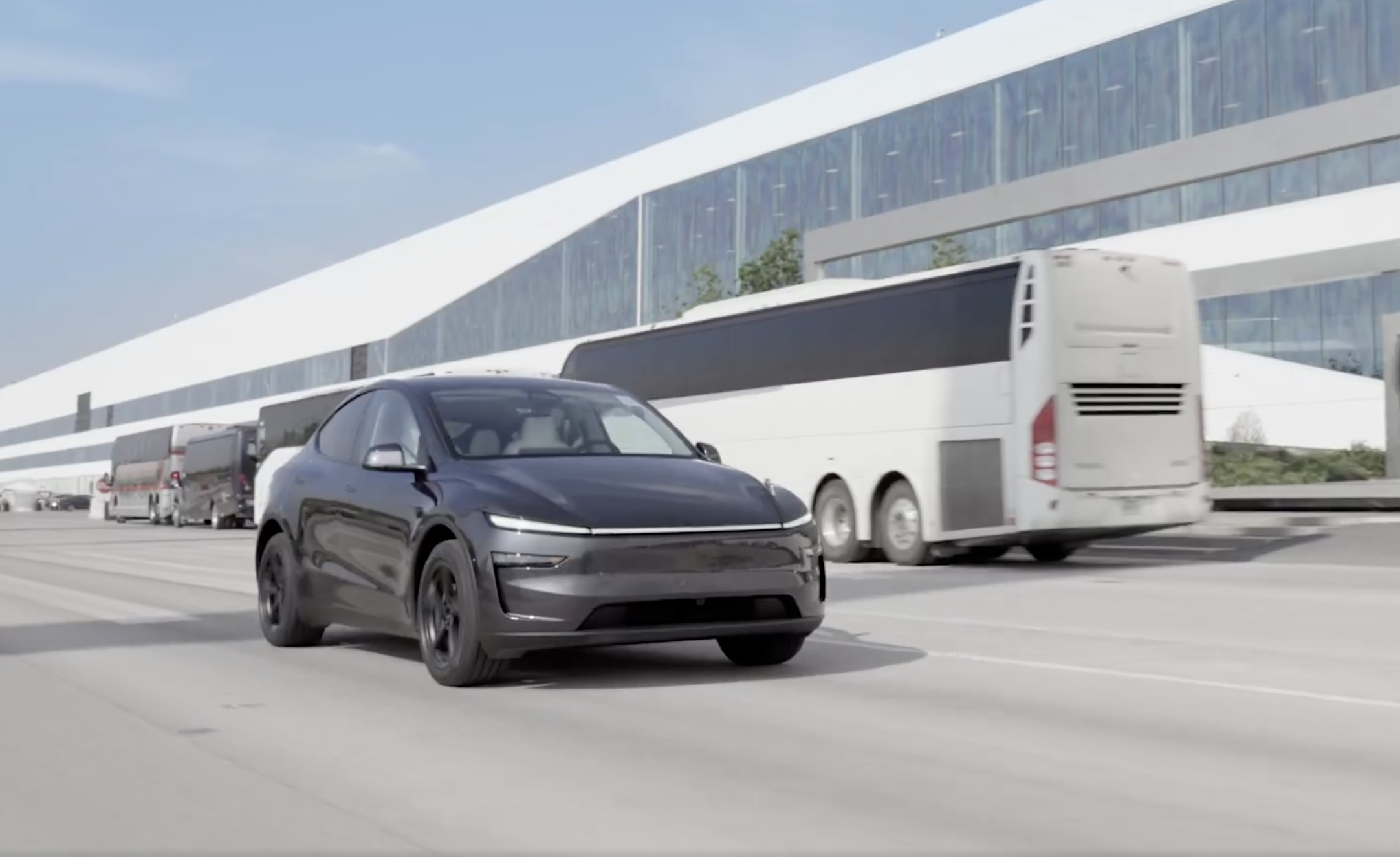
Tesla stock (NASDAQ: TSLA) has landed an elusive “must own” status from Wall Street firm Melius, according to a new note released early this week.
Analyst Rob Wertheimer said Tesla will lead the charge in world-changing tech, given the company’s focus on self-driving, autonomy, and Robotaxi. In a note to investors, Wertheimer said “the world is about to change, dramatically,” because of the advent of self-driving cars.
He looks at the industry and sees many potential players, but the firm says there will only be one true winner:
“Our point is not that Tesla is at risk, it’s that everybody else is.”
The major argument is that autonomy is nearing a tipping point where years of chipping away at the software and data needed to develop a sound, safe, and effective form of autonomous driving technology turn into an avalanche of progress.
Wertheimer believes autonomy is a $7 trillion sector,” and in the coming years, investors will see “hundreds of billions in value shift to Tesla.”
A lot of the major growth has to do with the all-too-common “butts in seats” strategy, as Wertheimer believes that only a fraction of people in the United States have ridden in a self-driving car. In Tesla’s regard, only “tens of thousands” have tried Tesla’s latest Full Self-Driving (Supervised) version, which is v14.
Tesla Full Self-Driving v14.2 – Full Review, the Good and the Bad
When it reaches a widespread rollout and more people are able to experience Tesla Full Self-Driving v14, he believes “it will shock most people.”
Citing things like Tesla’s massive data pool from its vehicles, as well as its shift to end-to-end neural nets in 2021 and 2022, as well as the upcoming AI5 chip, which will be put into a handful of vehicles next year, but will reach a wider rollout in 2027, Melius believes many investors are not aware of the pace of advancement in self-driving.
Tesla’s lead in its self-driving efforts is expanding, Wertheimer says. The company is making strategic choices on everything from hardware to software, manufacturing, and overall vehicle design. He says Tesla has left legacy automakers struggling to keep pace as they still rely on outdated architectures and fragmented supplier systems.
Tesla shares are up over 6 percent at 10:40 a.m. on the East Coast, trading at around $416.
News
Tesla on track to break Volkswagen’s historic record in Norway: report
As per Elbil Statistik, Tesla reached 26,127 Norwegian sales so far this year, without counting 13 imported Cybertrucks.
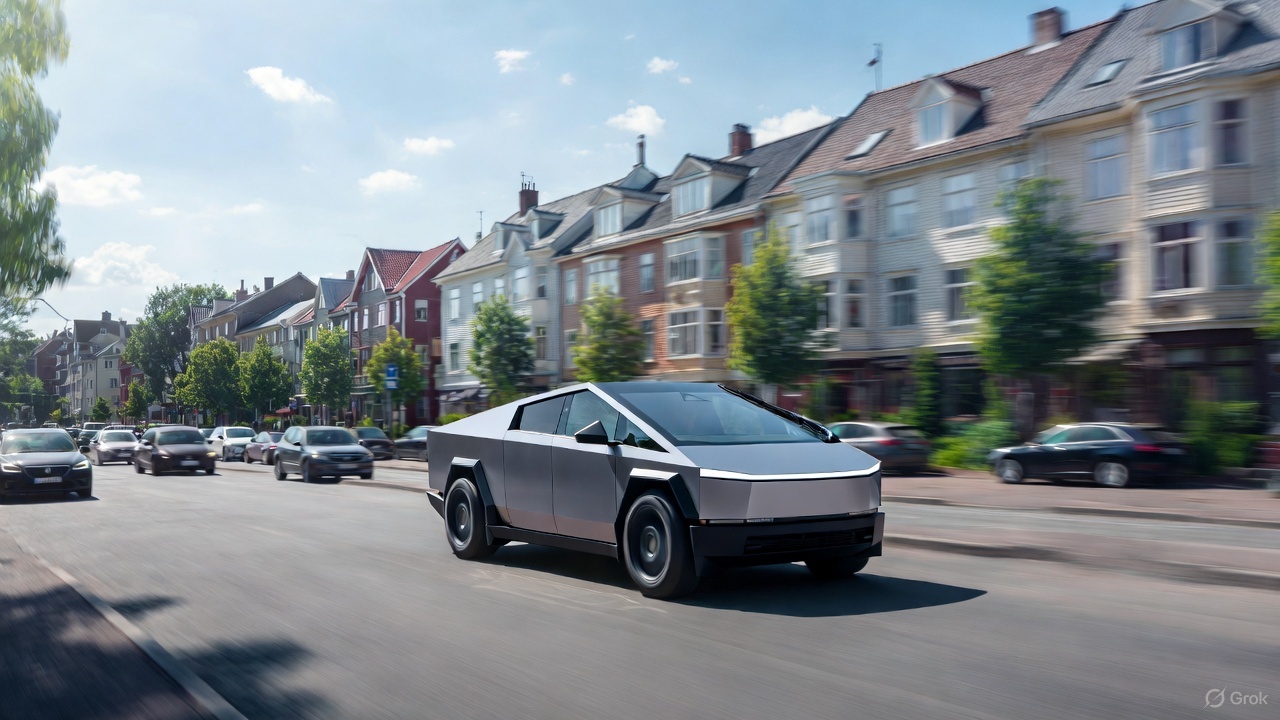
Tesla is surging towards a historic milestone in Norway this month, putting the company on track to break Volkswagen’s long-standing annual sales record in the country.
With 3,732 units sold in November alone and more than 26,000 delivered year-to-date, Tesla is poised to become one of the most successful car brands in Norway’s modern automotive history.
Tesla closes in on Norway’s all-time sales record
Norway’s demand for Tesla vehicles has intensified as drivers attempt to beat the incoming VAT changes on electric cars. Once the VAT changes take effect, the best-selling Model Y could become 50,000 kroner more expensive, as noted in a CarUp report. This has likely caused a rise in sales for Tesla in the country as of late.
As per Elbil Statistik, Tesla reached 26,127 Norwegian sales so far this year, without counting 13 imported Cybertrucks. This places the brand just hundreds of units away from surpassing Volkswagen’s 2016 record of 26,572 annual registrations. With one month left in 2025, it seems all but certain that Tesla will overtake Volkswagen’s all-time record in Norway.
Tesla sees challenges in Sweden
While Norway is delivering historic results, Tesla’s Swedish performance has moved in the opposite direction. Registrations have dropped 68% this year, totaling just 6,147 vehicles so far. November has seen only 291 deliveries, highlighting challenges in the domestic market’s momentum.
Tesla Sweden is also still dealing with an increasing number of union-backed protests and blockades. Despite the pressure, however, Tesla Sweden has maintained its stance, IF Metall union chair Marie Nilsson to urge Elon Musk to reconsider his perception of organized labor. She also stated that Swedish unions are not like their American counterparts, as they are not as combative.








